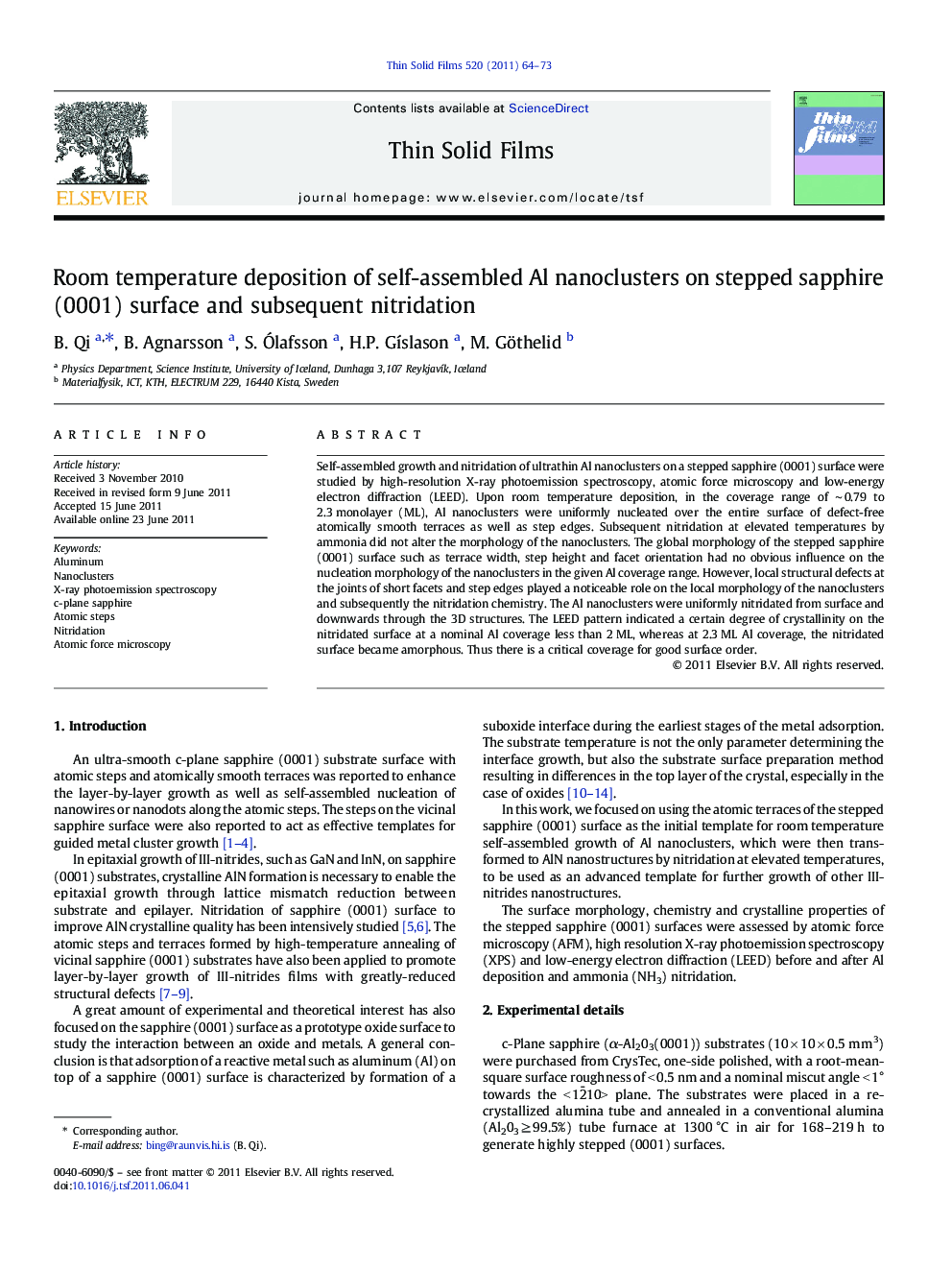| کد مقاله | کد نشریه | سال انتشار | مقاله انگلیسی | نسخه تمام متن |
|---|---|---|---|---|
| 1668395 | 1008869 | 2011 | 10 صفحه PDF | دانلود رایگان |

Self-assembled growth and nitridation of ultrathin Al nanoclusters on a stepped sapphire (0001) surface were studied by high-resolution X-ray photoemission spectroscopy, atomic force microscopy and low-energy electron diffraction (LEED). Upon room temperature deposition, in the coverage range of ∼ 0.79 to 2.3 monolayer (ML), Al nanoclusters were uniformly nucleated over the entire surface of defect-free atomically smooth terraces as well as step edges. Subsequent nitridation at elevated temperatures by ammonia did not alter the morphology of the nanoclusters. The global morphology of the stepped sapphire (0001) surface such as terrace width, step height and facet orientation had no obvious influence on the nucleation morphology of the nanoclusters in the given Al coverage range. However, local structural defects at the joints of short facets and step edges played a noticeable role on the local morphology of the nanoclusters and subsequently the nitridation chemistry. The Al nanoclusters were uniformly nitridated from surface and downwards through the 3D structures. The LEED pattern indicated a certain degree of crystallinity on the nitridated surface at a nominal Al coverage less than 2 ML, whereas at 2.3 ML Al coverage, the nitridated surface became amorphous. Thus there is a critical coverage for good surface order.
Journal: Thin Solid Films - Volume 520, Issue 1, 31 October 2011, Pages 64–73